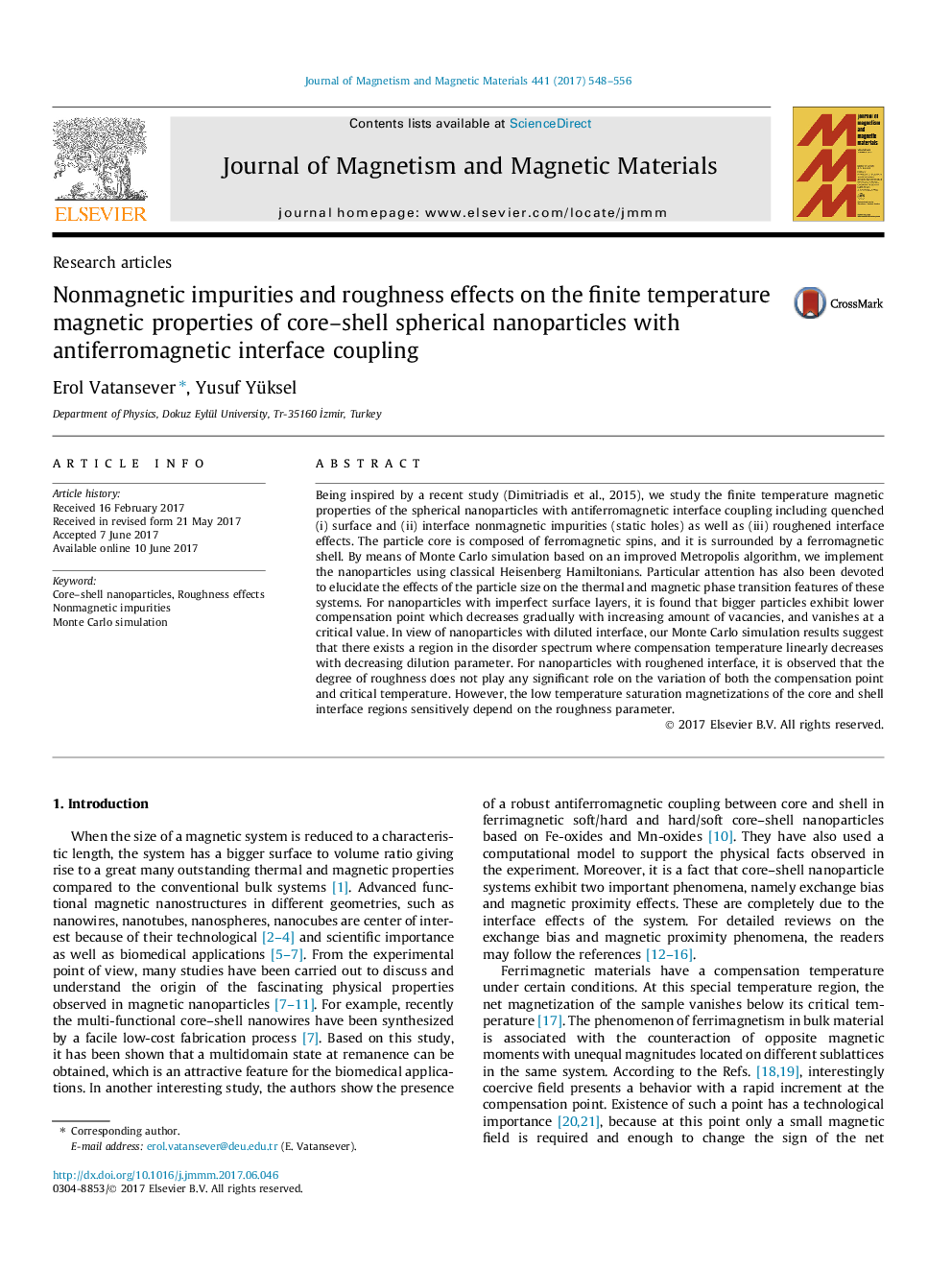| Article ID | Journal | Published Year | Pages | File Type |
|---|---|---|---|---|
| 5490489 | Journal of Magnetism and Magnetic Materials | 2017 | 9 Pages |
Abstract
Being inspired by a recent study (Dimitriadis et al., 2015), we study the finite temperature magnetic properties of the spherical nanoparticles with antiferromagnetic interface coupling including quenched (i) surface and (ii) interface nonmagnetic impurities (static holes) as well as (iii) roughened interface effects. The particle core is composed of ferromagnetic spins, and it is surrounded by a ferromagnetic shell. By means of Monte Carlo simulation based on an improved Metropolis algorithm, we implement the nanoparticles using classical Heisenberg Hamiltonians. Particular attention has also been devoted to elucidate the effects of the particle size on the thermal and magnetic phase transition features of these systems. For nanoparticles with imperfect surface layers, it is found that bigger particles exhibit lower compensation point which decreases gradually with increasing amount of vacancies, and vanishes at a critical value. In view of nanoparticles with diluted interface, our Monte Carlo simulation results suggest that there exists a region in the disorder spectrum where compensation temperature linearly decreases with decreasing dilution parameter. For nanoparticles with roughened interface, it is observed that the degree of roughness does not play any significant role on the variation of both the compensation point and critical temperature. However, the low temperature saturation magnetizations of the core and shell interface regions sensitively depend on the roughness parameter.
Related Topics
Physical Sciences and Engineering
Physics and Astronomy
Condensed Matter Physics
Authors
Erol Vatansever, Yusuf Yüksel,
